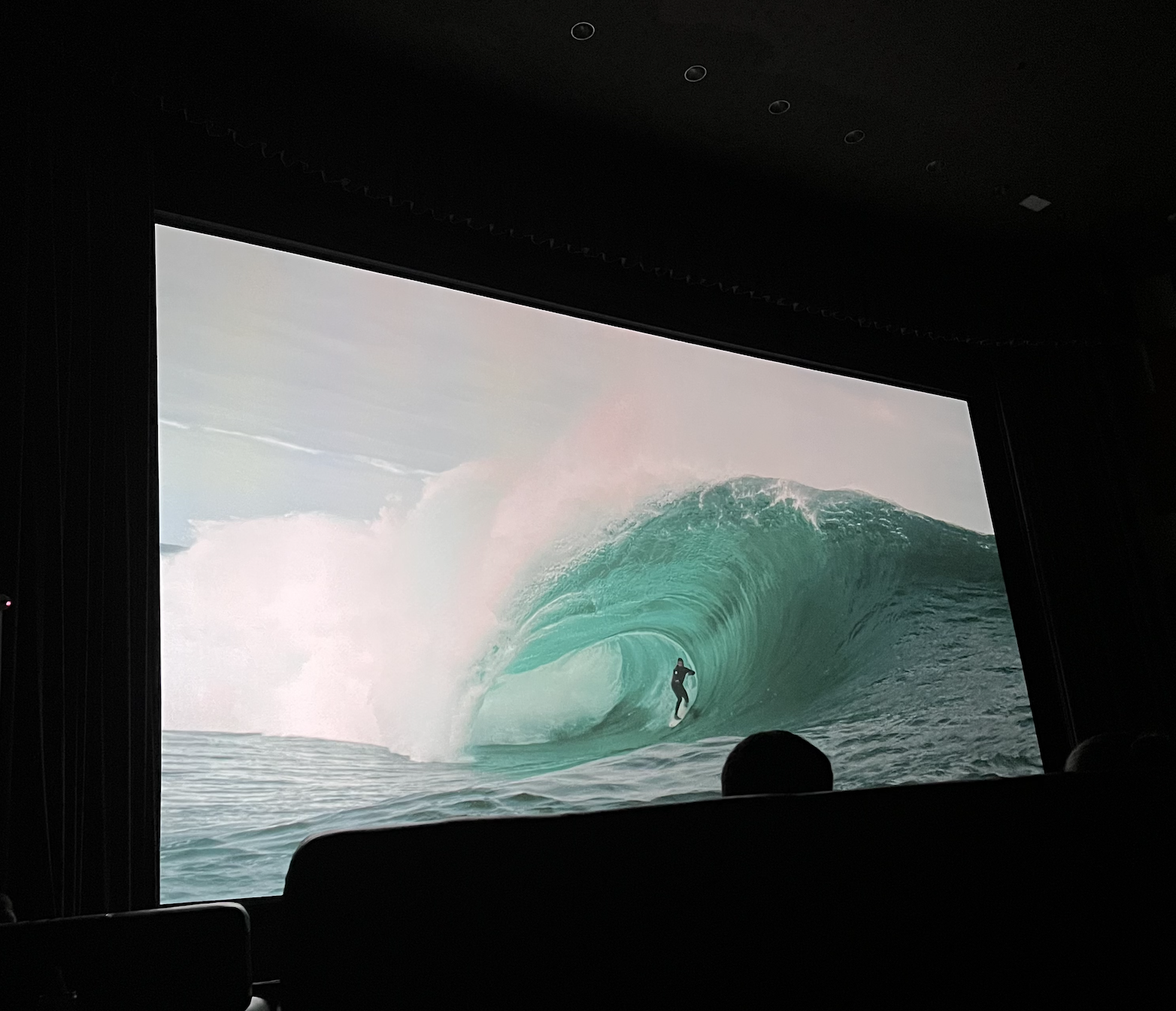By Melissa Kandel
The opening scene of “Facing Monsters” isn’t a quick-cut medley of flawlessly barreling waves set to a punky, pounding beat. Instead, in its first few seconds, director Bentley Dean gives us a birds-eye shot of something hovering on a sea of gentle crimson water. There’s humming in the distance and when the camera zooms in, we realize The Obscure Floating Thing is actually a heavily bearded man and his bright-red surfboard.
Is he alive? Is he floating in a pool of his own blood? Is this about to be the most ominous surf doc ever?!

Cut to a close-up of our once-floating protagonist, Australian surfer Kerby Brown, now out of the water but in serious trouble. His head is wrapped with bandages and his forehead is gravely bloody.
Let the show – playing at the 23rd Annual Newport Beach Film Festival – begin.
If we dig into the visual symbolism of a red sea, it could be an overarching metaphor about the main narrative of “Facing Monsters” – Brown’s near-biblical quest to part the menacing waters with nothing but a well-shaped stick and the lifetime-cemented confidence that he can.
(It could also be a prelude to the later-proposed idea that Brown is “bloody insane.”)
Symbolism or not, this film exists in a cinematic category about as far from surf movie pastiche as you can get. Unlike some glossier, froth-inducing predecessors, “Facing Monsters” is a capricious character study into the rawness of the ocean and the steel-nerved human who seeks to ride its biggest, baddest waves.
“The ocean is where I go to find peace,” Brown explains. “It’s where I feel free.”
He’s staring at the precipice of a craggy Western Australian shoreline, where a freakishly big and sloppy wave occasionally cleans up its act just long enough to crash with near-rideable shape against the dangerous terrain.
Brown and his brother, Cortney, are shown zipping around the fluid chaos on a jet ski, the famous Brown Brothers doing what they do best. Courtney details the first time they saw this wave, at once in awe of its power and in denial of it being remotely surfable.
(Spoiler alert: It was.)
Their father, Glenn Brown, watches nervously from a boat as Cortney expertly places Kerby into a building wave. Kerby drops in and drives deep into the mutant barrel before it spits him out on the other side.
With an unspoken “phew,” the eldest Brown describes his son’s innate surfing talent and subsequent regret he wasn’t around enough in the early years to watch him shine. Once a promising competitive surfer, Kerby abandoned the tour to win the ocean a different way.
In “Facing Monsters,” there’s a constant tension between the push of conventionality with the pull of freedom; Brown’s own life seems to be an excellent example of why the two can never swim side by side. We learn of his love story with Nicole Jardine – moving to Perth for her, replacing swells with drugs and alcohol, falling deeper into a self-destructive abyss, receiving the news of Jardine’s pregnancy and sobering up, returning to the waves then taking a job at off-shore oil rigs to support his growing family, all the while feeling like the societally defined trajectory of adult life isn’t how he’s cut out to live his.
Maybe this ever-present defiance is one of Brown’s many monsters that keeps him seeking new surf frontiers. Because he isn’t just a stoked surfer looking to get pitted every day of the week; he’s an untamed creature of the ocean, and its wildest, thickest, most treacherous hollows are where he ultimately thrives.
There’s also a child-like quality about Brown’s rejection of What Should Be. The film’s many surf clips show he’s a grown-up kid in a candy stop of his own making, except his treats are brutish waves more salty than sweet.
During the movie’s central sojourn, Brown and his brother complete the long pilgrimage hundreds of miles down the coast of Australia to surf a mythical wave so remote, the next-nearest land mass is Antarctica. He’d been studying the wave for years on Google Earth and when the brothers finally pull up to the titanic beast on jet ski, Brown proudly watches its unpredictable fury with a sense of pride you can almost feel.
We’re on.
What happens next you’ll have to watch to discover, a grand finale set against the husky guitar melody of Glenn Brown’s original Western Australia cowboy tune. As the patriarch croons about passion and its unknown depths, you realize “Facing Monsters” isn’t standing up to a fiendish wave then coming out the other side; it’s conquering the monster in you.
Melissa’s For-Whatever-This-Is-Worth Rating: EXCELLENT


